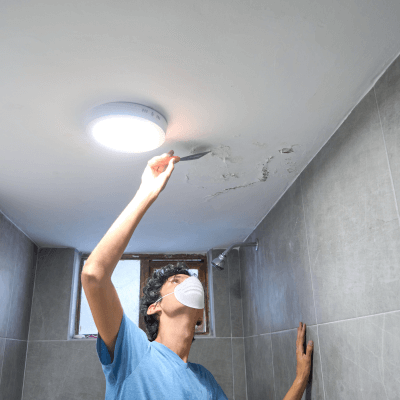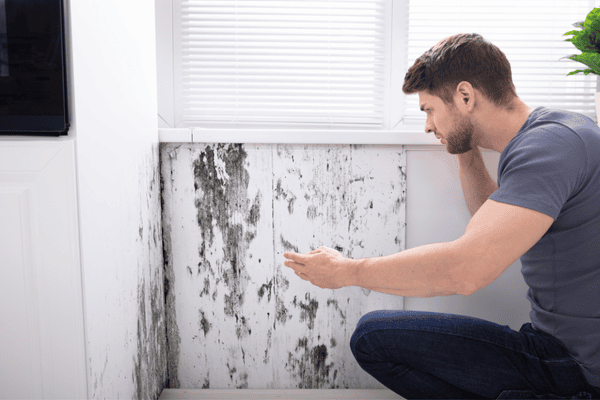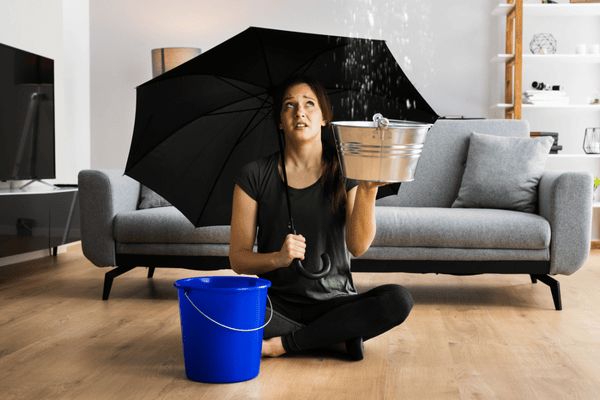
Water damage is more than just a temporary inconvenience—it can lead to long-term health and structural issues in your home. After a water leak, burst pipe, or flood, moisture can seep into walls, floors, and ceilings, creating the perfect environment for mold to thrive.
Mold can begin growing within 24 to 48 hours of water exposure, often in hidden areas. Left unchecked, mold growth can cause respiratory issues, trigger allergies, and lead to expensive repairs. That’s why knowing how to check for mold after water damage is essential for every homeowner.
In this guide, we’ll walk you through a step-by-step process to identify early warning signs, conduct a thorough mold inspection, and determine when professional mold testing is necessary. Let’s dive in.
Why Water Damage Increases the Risk of Mold Growth
Why does mold grow so quickly after water damage? Mold spores are everywhere, but they need moisture and organic materials (such as wood, drywall, or carpets) to thrive. When water damage occurs, the trapped moisture gives mold exactly what it needs to spread.
Common Causes of Water Damage
- Flooding: Severe storms or plumbing overflows can introduce large volumes of water into your home.
- Roof Leaks: A damaged roof allows rainwater to seep into ceilings and insulation.
- Burst Pipes: A sudden pipe failure can soak walls, flooring, and furniture.
- HVAC Condensation: Air conditioning units or faulty ventilation can lead to excess interior moisture.
- Appliance Malfunctions: Dishwashers, hot water heaters, and washing machines can fail and cause unnoticed leaks over time.
Once these issues occur, damp and humid conditions indoors accelerate mold growth in commonly affected areas like walls, ceilings, and carpets.
Early Warning Signs: How to Spot Mold Before It Spreads

Not all mold growth is immediately visible. That’s why it’s crucial to recognize subtle signs of hidden mold before a problem escalates. Before conducting a full-scale mold inspection, pay attention to these common warning indicators.
Visible Indicators of Mold
- Discoloration: Look for green, black, brown, or white patches on walls, ceilings, and floors.
- Fuzzy or slimy texture: Some mold appears as surface growth with a distinct texture.
- Dark spots: Pay attention to stains or spots near water-damaged areas.
- Warped paint or peeling wallpaper: Trapped moisture behind walls can cause these surface changes.
Hidden Mold Clues
- Musty or damp odors: A persistent moldy smell is often the first sign of hidden mold.
- Increased allergy symptoms: If you experience more coughing, sneezing, or headaches indoors, mold exposure could be to blame.
- Soft or spongy walls: Press against potentially affected areas to see if moisture has weakened them.
If you notice any of these signs, it’s time to conduct a thorough mold inspection.
How to Check for Mold After Water Damage: A DIY Inspection Guide
Follow these steps to inspect your home for mold and uncover hidden moisture problems.
Step 1: Wear Protective Gear
Before starting, wear gloves, a mask, and safety goggles to minimize exposure to airborne mold spores.
Step 2: Identify High-Risk Areas
Since mold grows in damp environments, focus on the following areas:
- Walls, ceilings, and floors near past water leaks.
- Basements, attics, and crawl spaces.
- Bathrooms, kitchens, and laundry rooms.
- HVAC vents and air ducts.
Step 3: Use Proper Tools
A flashlight helps you look for mold growth in dark areas behind furniture, under sinks, and along baseboards.
Step 4: Check for Moisture
Use a moisture meter to detect damp spots in walls, floors, and ceilings. High humidity levels often lead to hidden mold colonies.
Step 5: Perform the Smell Test
If you detect an earthy or musty odor, you may have a concealed mold issue.
Step 6: Inspect Behind Suspect Areas
If you find peeling wallpaper or warped paint, use a small tool to pull back the material and check for hidden mold growth.
Read more from FEMA- Mold & Mildew in your flood damaged home
When to Call in the Professionals: Signs You Need Expert Mold Testing
If your DIY efforts aren’t enough, it may be time to consider professional mold testing.
When to Hire an Expert
- Persistent musty odor: Hidden mold may require advanced detection methods.
- Unexplained allergic reactions: Ongoing health symptoms could indicate indoor mold exposure.
- Major water damage history: Homes with past flooding often have recurring mold growth.
Howard Environmental offers unbiased mold inspection services to help you determine the best course of action without unnecessary upsells.
Preventing Mold After Water Damage: What to Do Next
The best way to prevent mold is to remove moisture quickly. Here’s how:
Step 1: Dry the Area Fast
- Use dehumidifiers and fans to accelerate drying.
- Open windows to improve airflow.
- Remove heavily water-damaged materials like carpets and drywall.
Step 2: Long-Term Prevention
- Check for water leaks around your home frequently.
- Maintain HVAC systems to reduce indoor humidity.
- Seal cracks in roofs and walls to prevent future damage.
FAQ: Mold After Water Damage
How do you know if mold is behind drywall?
Mold loves to hide, especially inside your walls. Here’s how to tell if it’s inside the walls:
- Smell test – A musty odor with no visible mold? It’s probably inside.
- Mysterious stains – Yellow, brown, or black spots often mean potential mold growth.
- Soft or warped drywall – If it feels squishy, swollen, or crumbles, mold might be munching away.
- Indoor allergy spikes – If symptoms flare up at home, airborne mold could be the culprit.
To confirm, a mold inspection with moisture meters or infrared cameras can reveal what’s hiding behind the scenes.
Do I need a mold inspection after water damage?
Short answer? Probably. Even if you don’t see mold, it could be creeping in unseen places. A mold inspection can:
- Find hidden mold before it spreads.
- Check moisture levels to prevent future growth.
- Save you $$$ by stopping a small problem from becoming a big disaster.
If water sat for more than 24 hours, especially in walls or under flooring, don’t risk it—get an inspection.
Is it possible to have water damage and no mold?
Yes, if you act fast. Mold needs moisture, so if you:
- Dry everything quickly (fans, dehumidifiers, ventilation—go all out).
- Toss soaked materials (carpets, drywall, anything that traps moisture).
- Use mold-resistant materials– Homes with mold-resistant drywall, paint, or treated wood may have a lower risk.
But if moisture lingers in hidden spots? Mold is coming. If you’re unsure, an inspection can give you peace of mind.
Need to be 100% sure? Get a mold inspection and know for sure.
Stay Proactive to Protect Your Home
Regular mold inspections after water damage are essential for protecting your home’s structural integrity and your family’s health. Whether you opt for a DIY check or professional mold testing, early intervention is the key to preventing expensive repairs.
If you’re unsure about the severity of your mold problem, trust Howard Environmental for honest, expert advice. Schedule a professional mold inspection today!

